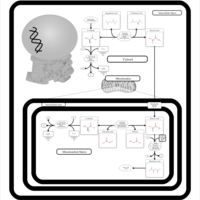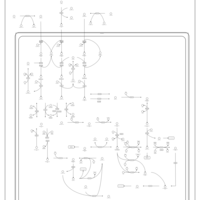| Alanine, aspartate and glutamate metabolism |    |
| Pyruvate metabolism |    |
| Pyrimidine metabolism |    |
| Valine, leucine and isoleucine degradation |    |
| Propanoate metabolism |    |
| Citric Acid Cycle |    |
| Urea Cycle |    |
| Glutamate Metabolism |    |
| Chlorothiazide Action Pathway |    |
| Polythiazide Action Pathway |    |
| Methyclothiazide Action Pathway |    |
| Bumetanide Action Pathway |    |
| Bendroflumethiazide Action Pathway |    |
| Quinethazone Action Pathway |    |
| Ethacrynic Acid Action Pathway |    |
| Hydrochlorothiazide Action Pathway |    |
| Cyclothiazide Action Pathway |    |
| Metolazone Action Pathway |    |
| Hydroflumethiazide Action Pathway |    |
| Indapamide Action Pathway |    |
| Furosemide Action Pathway |    |
| Torsemide Action Pathway |    |
| Trichlormethiazide Action Pathway |    |
| Chlorthalidone Action Pathway |    |
| Gluconeogenesis |    |
| Triamterene Action Pathway |    |
| Amiloride Action Pathway |    |
| Spironolactone Action Pathway |    |
| Eplerenone Action Pathway |    |
| 2-Hydroxyglutric Aciduria (D And L Form) |    |
| 2-Methyl-3-Hydroxybutryl CoA Dehydrogenase Deficiency |    |
| 3-Hydroxy-3-Methylglutaryl-CoA Lyase Deficiency |    |
| 3-Methylglutaconic Aciduria Type I |    |
| 3-Methylglutaconic Aciduria Type III |    |
| 3-Methylglutaconic Aciduria Type IV |    |
| Beta Ureidopropionase Deficiency |    |
| Beta-Ketothiolase Deficiency |    |
| Dihydropyrimidinase Deficiency |    |
| Glucose Transporter Defect (SGLT2) |    |
| Hartnup Disorder |    |
| Iminoglycinuria |    |
| Leigh Syndrome |    |
| Lysinuric Protein Intolerance |    |
| Malonic Aciduria |    |
| Maple Syrup Urine Disease |    |
| Methylmalonic Aciduria |    |
| Methylmalonic Aciduria Due to Cobalamin-Related Disorders |    |
| MNGIE (Mitochondrial Neurogastrointestinal Encephalopathy) |    |
| Pyruvate Dehydrogenase Complex Deficiency |    |
| UMP Synthase Deficiency (Orotic Aciduria) |    |
| Esomeprazole Action Pathway |    |
| Omeprazole Action Pathway |    |
| Lansoprazole Action Pathway |    |
| Pantoprazole Action Pathway |    |
| Rabeprazole Action Pathway |    |
| Ranitidine Action Pathway |    |
| Famotidine Action Pathway |    |
| Cimetidine Action Pathway |    |
| Nizatidine Action Pathway |    |
| Propionic Acidemia |    |
| 3-Methylcrotonyl Coa Carboxylase Deficiency Type I |    |
| Isovaleric Aciduria |    |
| 4-Hydroxybutyric Aciduria/Succinic Semialdehyde Dehydrogenase Deficiency |    |
| Pirenzepine Action Pathway |    |
| Lactic Acidemia |    |
| Pyruvate Decarboxylase E1 Component Deficiency (PDHE1 Deficiency) |    |
| Hyperinsulinism-Hyperammonemia Syndrome |    |
| Pyruvate Carboxylase Deficiency |    |
| Primary Hyperoxaluria Type I |    |
| Glycogen Storage Disease Type 1A (GSD1A) or Von Gierke Disease |    |
| Methylmalonate Semialdehyde Dehydrogenase Deficiency |    |
| Homocarnosinosis |    |
| Threonine and 2-Oxobutanoate Degradation |    |
| Transfer of Acetyl Groups into Mitochondria |    |
| Kidney Function |    |
| Malonyl-coa decarboxylase deficiency |    |
| 3-hydroxyisobutyric acid dehydrogenase deficiency |    |
| 3-hydroxyisobutyric aciduria |    |
| Isobutyryl-coa dehydrogenase deficiency |    |
| Isovaleric acidemia |    |
| Congenital lactic acidosis |    |
| Fumarase deficiency |    |
| Mitochondrial complex II deficiency |    |
| 2-ketoglutarate dehydrogenase complex deficiency |    |
| Pyruvate dehydrogenase deficiency (E3) |    |
| Pyruvate dehydrogenase deficiency (E2) |    |
| Primary hyperoxaluria II, PH2 |    |
| Pyruvate kinase deficiency |    |
| Phosphoenolpyruvate carboxykinase deficiency 1 (PEPCK1) |    |
| Fructose-1,6-diphosphatase deficiency |    |
| Triosephosphate isomerase |    |
| Succinic semialdehyde dehydrogenase deficiency |    |
| Glycogenosis, Type IB |    |
| Glycogenosis, Type IC |    |
| Glycogenosis, Type IA. Von gierke disease |    |
| Blue diaper syndrome |    |
| Lysinuric protein intolerance (LPI) |    |
| Gastric Acid Production |    |
| Warburg Effect |    |
| Cystinuria |    |
| Roxatidine acetate Action Pathway |    |
| Metiamide Action Pathway |    |
| Betazole Action Pathway |    |
| The oncogenic action of 2-hydroxyglutarate |    |
| The Oncogenic Action of Succinate |    |
| The Oncogenic Action of Fumarate |    |
| Glutaminolysis and Cancer |    |
| The oncogenic action of L-2-hydroxyglutarate in Hydroxygluaricaciduria |    |
| The oncogenic action of D-2-hydroxyglutarate in Hydroxygluaricaciduria |    |
| Lafutidine H2-Antihistamine Action |    |